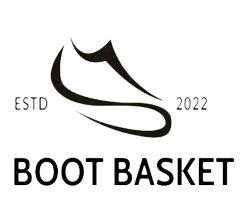For example, a retailer may buy computers with the intention of selling them to consumers. In order to earn a profit on these sales, he marks the computers up to a price that is higher than what he paid for them. Since a product’s markup is higher than its margin, mistaking the two can be quite costly.
Purpose of Markups and Markdowns
- Suppose, there is a mobile manufacturing company that has the following cost and sales expectations.
- A bond issue, for instance, might have less demand than a dealer anticipated.
- Calculating your margin and markup allows you to make informed decisions to establish pricing and maximize profits.
- Markup percentages are especially useful in calculating how much to charge for the goods/services that a company provides its consumers.
- They also have to pay employees, utilities, rent, shipping, credit card cost and any number of other things out of this mark up.
You can find the “invoice” price online now, but it only tells part of the story. Let us understand the concept of markup pricing through the markup pricing example. Say you are a service provider that offers legal services to small businesses.
Profit Margin
A markup percentage is a number used to determine the selling price of a product in relation to the cost of actually producing the product. The number expresses a percentage above and beyond the cost to calculate the selling price. Markups are common in cost accounting, which focuses on reporting all relevant information to management to make internal decisions that better align with the company’s overall strategic goals.
Implications of Markups
The markup of a good or service must be enough to offset all business expenses and generate a profit. Given a markup price, calculating the markup percentage is a relatively straightforward process. In practice, the markup price stage left or right meaning is typically calculated for internal uses and to help set prices. In lieu of charging a flat fee, brokers acting as principals can be compensated from the markup (gross profits) of securities held and later sold to customers.
AccountingTools
Overall, markup percentages are just one way to determine selling price out of the numerous pricing strategies that use production costs as a basis. The gross profit margin is the profit margin for a specific sale and is calculated by subtracting the cost of goods sold (COGS) from the revenue. To calculate the selling price for your products, simply use the free Markup Calculator. All you’ll need to do https://accounting-services.net/ is plug in the cost and your preferred markup percentage, and the calculator will generate the selling price for you. Charging a 50% markup on your products or services is a safe bet, as it ensures that you are earning enough to cover the costs of production plus are earning a profit on top of that. Too small of margins and you may barely be earning money on top of the costs of making the product.
CFI is on a mission to enable anyone to be a great financial analyst and have a great career path. In order to help you advance your career, CFI has compiled many resources to assist you along the path. Get instant access to lessons taught by experienced private equity pros and bulge bracket investment bankers including financial statement modeling, DCF, M&A, LBO, Comps and Excel Modeling. To do this, they might reduce prices, even if it results in a loss on the transaction. Get instant access to video lessons taught by experienced investment bankers.
Use this markup calculator to easily calculate your markup, gross profit, or the revenue required to achieve a given markup percentage. Enter the cost and either the (desired or actual) the gross profit, the total revenue, or the markup percentage to calculate the remaining two. The revenue coincides with the markup price if calculating for a single unit of sales.
To calculate her markup, Shalon needs to take into consideration things like the cost of her time spent designing the shirts, the cost to manufacture the shirt, and the cost of keeping the store open. After all these costs are calculated, then she needs to figure out how much more she needs to add so she can make a good living from her t-shirt business. The main difference is that the rate, or the percentage amount to be increased or decreased, is either added or subtracted from the original price. The producer’s overall production and distribution costs include fixed and variable costs.
A markdown, on the other hand, occurs when a broker purchases a security from a customer at a price lower than its market value. Markdowns also occur when a dealer charges a customer a lower price for a security than the current bid price among dealers. Dealers might offer lower prices to customers in order to stimulate additional buying, which will offset their initial losses by earning them extra commissions. Markups occur when certain marketable securities are available for purchase by retail investors from dealers who sell the securities directly from their own accounts.
In our earlier example, the markup is the same as gross profit (or $30), because the revenue was $100 and costs were $70. However, markup percentage is shown as a percentage of costs, as opposed to a percentage of revenue. Markup percentage is a percentage markup over the cost price of a product to determine the selling price of a product.



